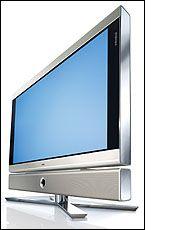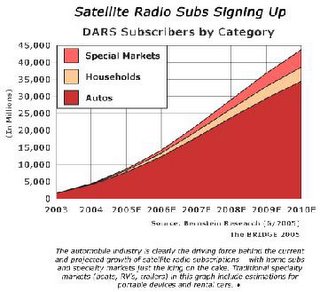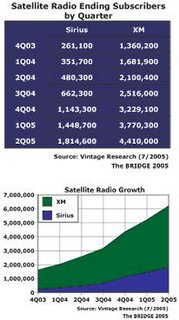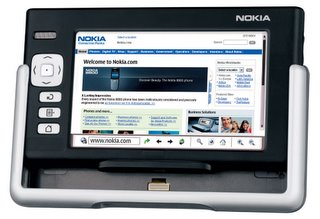29 Jan 2006
THE DEAL ON INTERNET CAR SALES
SATELLITES PART IV: CELESTRIAL MOVEMENTS
Landing here for a few days R & R I spent most of the time swimming, sitting on the beach and playing games with the numerous kids I was staying with. But at night, the place is gifted with next to no light pollution. The sky’s are pitch black and when there are no clouds the picture above is fantastic. The Milky Way stretches overhead in detail and all the stars visible to the naked eye are easy to spot. With little else to while the evening away apart from drinking, we engaged in a little star-gazing.
While technology was pretty much banned at the bach, we were able to smuggle in a Garmin handheld GPS unit and a Harrier smartphone. Getting the co-ordinates of Riversdale from the Garmin, we were then able to plug them into the website http://www.heavens-above.com/ to find out exactly what satellites were visible overhead.
Among the couple of dozen or so satellites that are visible in the night sky over New Zealand are the US military’s Lacrosse spy satellites, the SeaSat weather research satellite, a bunch of Cosmos rockets that have been floating around for years and the International Space Station. The latter is very large and reflects a lot of light, therefore making it easy to see with the naked eye. The website told us ISS would be visible for 35 seconds from 22.03 from 10 degrees to 80 degrees to the north-west so we studied the sky waiting for it. It didn’t show. Maybe the timing was wrong but we didn’t see it in the band specified. However we soon after did see a satellite streak straight overhead. Within a couple of hours of just looking up at the night sky I had spotted six satellites and two shooting stars. I gave up on trying to match them with the data from the website as they never appeared where they were meant to. Still, I was staggered at the number of satellite pass-overs we were able to pick up. There was an excited cry as someone from our inebriated party spotted another spot of light tearing across the sky.
What makes the satellites visible is their reflection of the sun’s light. Some are brighter than others, depending on how much light the structure of the satellite catches and how reflective the coating of the satellite is. Most of the satellites are designed to reflect as much light as possible so are coating in particularly reflective materials. A system designed by the ancient Greeks, but adapted by modern astronomers is used to determine how bright a celestial body is based on magnitude. It’s a logarithmic scale that goes from minus to plus. So the sun is incredibly bright at -26.7, the full moon, still very bright at -12.7. Most of the satellites moving over New Zealand range from -3 to +5. Those in positive territory become progressively harder to see as their rating increases until they are undetectable by the human eye at between +6 and +7. Pluto has a magnification of +14 making it visible only through powerful telescopes.
Seeing the International Space Station pass overhead and knowing there are a handful of people onboard floating in space, does send a shiver down the spine. The astronauts will be preparing for a space walk scheduled for February 3. During the operation they will jettison an old Russian space suit that will float in its own orbit around the earth for up to six weeks before being drawn into the earth’s atmosphere and burning up on its re-entry. Before it does so, radio equipment on the suit will transmit recorded messages in several languages that ham radio operators will be able to pick up. How long the transmissions last for will depend on how long the radio equipment’s batteries hold out for but it could be days or weeks. I’ll certainly be getting my father, a ham radio operator (ZL1AXS) to listen out on his rig for the empty cosmonaut’s suit circling the globe.
Thanks to Detlef for introducing me to Heavens-above.com
Wellington’s co-ordinates: ( 41.3000°S, 174.7830°E)
20 Jan 2006
THE LOEWE DOWN ON LCD TV VIEWING
Here’s my Herald review of the Loewe set I mentioned previously that I was reviewing. I must say I was pretty impressed but at $6000, you’d expect nothing less.
The one thing I constantly think about when I’m watching such good quality high-end LCD sets, is how they break the mystique of cinema. The Bourne Identity, which is a high budget, slick-looking movie on my 24 inch Panasonic, looks pretty crappy on the 32 inch Loewe. It’s like the difference between watching programming from the US in the NTSC format and British programming formatted in PAL.

SPAM'S LAST GASP
The guy was probably 18 at the time and he made a mint, tax free, working for his Russian and American masters. He had a Paypal account set up to receive his payments and switched internet providers regularly as they cottoned onto his spam scam. That was just a few years ago, when the spamming industry was in full swing. Companies were taking drastic action to save their mail servers from collapsing, worker productivity was going down the drain as people waded through inboxes full of junk mail and software companies sought a silver bullet solution to spam.
Now, as I suggest in this Herald column, spam has a terminal disease. It’s in decline, the world now familiar to its traits, the citizens of the internet savvy in their understanding of how to deal with it. The spam is still being sent but we’re actually confronted with only a fraction of it these days.
That spells the beginning of the end for the spammers. The business model is in the toilet. Most have already moved on to something entirely more lucrative, phishing, a particularly nasty web scam that involves shadowy figures tricking you into giving them your bank account information. They then clean you out leaving you staring incredulously at the eftpos terminal when the transaction comes up DECLINED.
Yep, a few incremental improvements technology wise and a bit of education is slowly buy surely relieving the pain of spam. I give it two more years before it’s all just a bad memory.
SATELLITE RADIO PART III: ARTHUR C. CLARKE
 A couple of years later I rented a house off Peter Escher, an eccentric satellite fanatic who runs Satlink, a company that installs large satellite dishes for those who want to catch random feeds mainly in Chinese and French from the several satellites that can be picked up here for free if the dish is big enough and you’ve got one of Peter’s decoders.
A couple of years later I rented a house off Peter Escher, an eccentric satellite fanatic who runs Satlink, a company that installs large satellite dishes for those who want to catch random feeds mainly in Chinese and French from the several satellites that can be picked up here for free if the dish is big enough and you’ve got one of Peter’s decoders. 04.12.2001
Science fiction writers seldom see their fantasy worlds come to life, but the king of the genre, Sir Arthur C. Clarke, has watched his fair share of scientific predictions come to life in a writing career spanning half a century.
The 84-year-old who co-wrote the screenplay for 2001: A Space Odyssey rarely gives interviews, but checked in via an audio link from his home in Colombo, Sri Lanka, to chat with IT professionals attending the South East Asia Regional Computer Confederation held in Auckland.
Some 33 years after the psychotic HAL 9000 computer system took on a life of its own, terrorising its human crewmates in outer space, satellites, fax machines, videophones and laptops play important roles in our lives. And they all featured in Clarke's books long before they turned up as expensive prototypes. Clarke is impressed at the progress space exploration has made since 1950 when he wrote The Sentinel, a short story which became the basis for his epic film. But the end of the Cold War slowed the race for the stars, he says. "There was no great impetus to go to the planets. But I'm very happy we've reconnoitred all the planets. I never thought we'd do that in my lifetime."
Clarke's 80-plus science fiction books have given glimpses of radically different futures on Earth and beyond our universe. "In the words of my good friend Ray Bradbury, 'I don't try to describe the future, I try to prevent it'." But these days, his visions of the future stem no longer from pure imagination, but technology that man is just beginning to grasp.
"The next great revolution will be in energy," he says. "Future generations will regard us criminals for burning oil." Nanotechnology - building computers the size of molecules will also take giant leaps. And communications will link an ever increasing number of people, creating "electronic tribes" and bridging the digital divide. "There'll be no reason every village can't have its own satellite.
All you need is a satellite dish and a solar panel." But Clarke is still waiting for Nasa to bring one of his more unusual creations to life. He calls it the space elevator - mass transit to the stars. "The rocket's all we've got at the moment," he says. But a cable from a spacestation in stationary orbit down to a point on Earth carrying an electronically-powered elevator will cut out the need for rockets.
Clarke's fascination with technology was sparked by the science fiction comics of the 1930s. He later joined the RAF and was in charge of the first radar ground controlled approach during its trials in the Second World War. But a few things have caught Clarke by surprise. He had astronauts sending text messages to Earth in the 1960s, but totally missed the impact of the internet and e-mail.
But he did forecast our eventual dependence on telecommunications in his story Dial F for Frankenstein, where a telephone system becomes conscious and takes over the world. Voice recognition technology has also developed beyond his expectations. "I thought it would be way off. Now I use it here in my office." Of the artificial intelligence hinted at in his books but so far (thankfully) elusive, Clarke is ambivalent.
"It seems like we're closer to artificial stupidity at the moment. Artificial intelligence has been 20 years away for the last 50 years. That would make 2020 a reasonable date." The discovery of extra-terrestrial life is what Clarke is most excited about - something he believes would be "the greatest thing in human history". It is the one remaining thing he hungers to see discovered, but realises he is unlikely to.
"The best proof of intelligent life in outer space is the fact that it hasn't come here," he chuckles. The elder statesman of sci-fi is winding down his writing career. But work on a host of TV projects, film adaptations and documentaries will keep him busy. In particular, Clarke is excited about the big-screen version of his book Rendevous with Rama, starring Morgan Freeman.
Finally, Clarke - who has had post-polio syndrome since the mid-1980s and is in a wheelchair - wants to lay a 2001 myth to rest once and for all. Since Stanley Kubrick made Clarke's book famous with the film version of 2001: A Space Odyssey, rumours have persisted that HAL represented IBM. Conspiracy theorists noticed the letters preceding I, B and M in the alphabet spelled HAL. That was pure coincidence. HAL stands for Heuristic Algorithmic Computer and nothing more, Clarke says.
"I've been trying to stamp that rumour out for 30-plus years," he adds wearily. "If we'd noticed its resemblance at the time, we'd probably have changed it," he says, noting that IBM did not get upset about the association. Big Blue even gave him a Think Pad to write a second followup 3001: The Final Odyssey. Clarke is comfortable with the fact he will not be around to see the contents of that book fleshed out.
SATELLITE RADIO PART II
A Q&A with IPStar spokesman John Humphrey.
Is IPStar looking into digital satellite radio for this part of the world?
 No, not to my knowledge at least. The current IPSTAR-1 satellite is not designed for Satellite Digital Audio Radio Service (S-DARS). The service requires a dedicated number of one-way transponders usually operating in S-band (US) or L-band (Europe). The transponders have to be reasonably high powered to provide connectivity to the small antennas used in cars or to the internal antennas in devices. IPSTAR was designed for two-way Internet access into 50 cm + antennas.
No, not to my knowledge at least. The current IPSTAR-1 satellite is not designed for Satellite Digital Audio Radio Service (S-DARS). The service requires a dedicated number of one-way transponders usually operating in S-band (US) or L-band (Europe). The transponders have to be reasonably high powered to provide connectivity to the small antennas used in cars or to the internal antennas in devices. IPSTAR was designed for two-way Internet access into 50 cm + antennas.Has Shin done any digital satellite radio services in Asia yet?
No. There is only WorldSpace in Asia I think. This only has coverage down to NW Australia. (http://www.worldspace.com/)
Are these services hard to provide?
As above, requires a purpose designed and built satellite. It also requires coordination with terrestrial spectrum users so that ground based services cannot operate in the same frequencies (which would cause interference).
Do you think there'd be a market for them in a place like New Zealand?
We are so far away from the large concentrations of population (Asia, Europe & US) that designing a bird with coverage extending to NZ would not traditionally have the economics required. However, who knows in the future with advances in satellite capacity per build dollar (such as IPSTAR-1) but my guess is that such a business case will be tenuous for some time. I am sure if it could be provided there would be a sizeable market in NZ. You only have to look at the figures for the US.
Q&A with Altec Lansing senior vice president of sales and marketing, Robert Heiblim.
Does Altec Lansing have speakers designed specifically for digital satellite radio players (either in-car or portable models) in the market in other parts of the world?
Altec Lansing's speaker systems for satellite radio currently are limited to the U.S. and Canada markets. We have partnered with one of the leading services in this industry. Through this partnership, we have been educated about the market and user needs, and we will assess each opportunity moving forward based on the market and user needs.
What does Altec Lansing see as the appeal in the technology? Aren't most people well serviced by existing terrestrial radio services?
Satellite radio plays a different role than local terrestrial broadcast. Local broadcasting provides listeners with local news, weather, traffic, ads and other regional matters they need. Satellite radio focuses more on entertaining listeners. The appeals in satellite radio are the quality of sound that comes with digital audio, the variety of program content and the fact that you can access the same content no matter where you are located. Altec Lansing and XM Satellite radio have a similar approach to product development: we aim to provide a sound enhancement solution to the digital audio market, and we give users a wide variety of listening experiences to match their lifestyle needs. Consumers appreciate the freedom of choice.
How important a market is digital satellite radio to Altec Lansing? Does the company project big growth in this market in 2006?
Our speaker systems for XM Satellite Radio fall under our on-the-go, versatile speaker and digital home audio speaker categories. These were our top-selling categories in 2005. We expect our satellite radio speaker systems to take up a larger share of these categories in 2006.
If other digital radio satellite services come to market, will the existing Altec Lansing digital satellite radio player speakers be able to work with them or are they XM Radio specific?
Although our speaker systems for satellite radio are XM specific, they all contain an auxiliary jack for connection to other portable digital audio devices.
Graphics from reports by Vintage Research and Bernstein Research supplied by John Humphrey.
THE PROBLEM WITH RADIO, SATELLITE RADIO
Nor does IPStar, a subsidiary of Thailand-based Shin Satellite, which has one of the biggest commercial satellite’s ever launched positioned over the South Pacific. That satellite is capable of delivering two-way, high-speed broadband to the whole of New Zealand. IPStar’s New Zealand spokesman, John Humphrey was unavailable for comment before press time but I’ve posted some remarks from him below and excerpts from a useful report he sent me on the state of play in satellite radio in the flourishing US market.
 I guess I’ve been turned onto the idea of satellite radio through listening extensively to internet radio stations. I simply place my lightweight laptop beside my stereo, connect the two via an audio input and I’ve got the BBC World Service or any other station I want to listen to, piped through my speakers. That’s great when I’m at home, but radio is the companion of the traveler, the commuter. There’s a reason one of most popular segments of the radio day is “drive time”. That’s when everyone’s in their cars, a captive audience of hundreds of thousands.
I guess I’ve been turned onto the idea of satellite radio through listening extensively to internet radio stations. I simply place my lightweight laptop beside my stereo, connect the two via an audio input and I’ve got the BBC World Service or any other station I want to listen to, piped through my speakers. That’s great when I’m at home, but radio is the companion of the traveler, the commuter. There’s a reason one of most popular segments of the radio day is “drive time”. That’s when everyone’s in their cars, a captive audience of hundreds of thousands.Satellite radio would let these people listen to a large selection of specialist stations. With companies like Audible specializing in spoken-word programming – audio books and talk shows, the traditional concept of radio is changing. In a mirroring of the pay TV model, smaller audiences are spread across a large number of usually commercial-free channels. Subscription fees are instead charged. Imagine that, continuous music uninterrupted by the inane banter of radio jocks. Alas, it’s not going to be that way here.
16 Jan 2006
CES: GAMBLING ON GADGETS AND THE INTERNET

As I wrote in the paper: “The hi-tech orgy revealed what the industry is doubling its bets on this year: high-definition movies, players and TV screens, video game consoles, computers for the living room, mobile gadgets and, most significantly, the internet.”
Oh yeah, the Internet. 2005 certainly made me look at it in a different way because of the new free services it offered up (see The Free Face of the Web below). Google will continue to be the company to watch though there may be a little cooling off in demand for its shares as competitors catch up with the internet juggernaut. The Google Print project may be stymied this year by legal action, but the alliance with Sun, Google Video and the company’s expansive partnership plans will be interesting to watch.
I’m less enthusiastic about the Windows Live concept, it seems like a foregone conclusion and doesn’t seem to add much that isn’t already out there and easy to access. But I am looking forward to Vista.
By the way, I’ve been watching some high definition video clips fed from Windows Media player 10 through to a beautiful Loewe LCD TV screen I’m testing at the moment and the results are pretty impressive. Who needs a media centre PC when you can plug your laptop in and get a ready-made entertainment hub?
9 Jan 2006
THE GORILLA AND THE SPIKE
by Peter Griffin
Kong would continue to generate revenue in “ancillary markets” for years to come.
“I don't think Peter is worrying too much about his Kong salary. He won't have to leave his day job anytime soon - any studio would happily give him a few hundred million to make his next film.”
7 Jan 2006
WETA DOES SHEEP


According to the Film Makers, Black Sheep tells the story of "a genetic experiment gone horribly wrong; the sheep start turning nasty and it’s the people that begin to bleat."
2 Jan 2006
COLD HARD FACTS
His piece paints an interesting picture of the apparent failings in the humanitarian aid effort currently under way there. His special report, like the features he wrote for Metro about Iraq and the West Bank last year, is a very good read.
It was good to see more coverage of the Pakistan situation around Christmas as the news networks wrapped up the disasters of the year, starting with the aftermath of the tsunamis of Christmas 2004. But by and large, the disaster in Pakistan which made three million people homeless as the country was plunged into winter has been majorly under-reported.
Jon has covered a number of Middle Eastern conflicts in the last few years and does it all on the smell of an oily rag. He never gets “embedded” or engages in the hotel journalism better resourced reporters make do with. He travels anonymously, wearing the same garb as the people of the country he is visiting, working quietly with a trusted fixer, taking the road less traveled.
When Jon went to Pakistan at the height of the US invasion of Afghanistan in 2001, I told him he didn’t have a shit show of getting across the border to cover the war. The next thing I saw was a report in the Sunday Star Times where he was reporting from Tora Bora, which saw some of the most vicious fighting of the war. His type of journalism is dangerous, overlooked and badly paid. But it’s needed to fill in the gaps in coverage provided by the big media organizations. I know Jon’s got plenty more planned for 2006 so keep an eye out for his work in print and on TV.
UPDATE: Scoop has posted some of Jon's photographs from Pakistan.
1 Jan 2006
Revenge is a dish best served cold...
 After exhausting the holiday reading materials I picked up at The Warehouse for a very reasonable $15 (Robert Lacey's The Year 1000, Bob Woodward's Bush at War and Robert Harris' Pompeii), I found myself browsing the dusty paperbacks lining my parents' bookshelf. I came across an old favourite of mine, Stephen King's superb collection of short stories, Nightmares and Dreamscapes.
After exhausting the holiday reading materials I picked up at The Warehouse for a very reasonable $15 (Robert Lacey's The Year 1000, Bob Woodward's Bush at War and Robert Harris' Pompeii), I found myself browsing the dusty paperbacks lining my parents' bookshelf. I came across an old favourite of mine, Stephen King's superb collection of short stories, Nightmares and Dreamscapes. I love stories of revenge, not hot-headed, passionate reprisals but stories about the vengeful who wait calmly for years to pass before they mete out their perfectly conceived pay back. Robinson, the main character in Dolan's Cadillac is such a person. The story outlines his ten year pursuit of the crime boss who was responsible for his wife's death. It involves a Cadillac, some heavy machinery and a 42 foot hole in the Nevada highway. It's King's best short story of those included in the four large collections he's so far put out. There was talk at one stage of making it into a movie. I hope it comes off because, done properly, this could be very good on screen. Unfortunately, many of King's adaptations turn out crap. For every Shawshank Redemption there's a Tommy Knockers and Riding the Bullet.
According to Stephenking.com, Nightmares and Dreamscapes is being made into an eight X one hour TV series. That explains the rumour about Dolan's Cadillac being adapted. The story could be very nicely told in 45 minutes (the rest of the slot taken up by adverts. Some decent screenwriters, including Larry Cohen, who adapted King's IT and Carrie are writing the scripts so it looks promising.
Also, King is putting out The Secretary of Dreams, a reissue of half a dozen of his short stories in graphic novel format, accompanied by illustrations in pulp horror comic style. Included are a couple of my favourites, The Road Virus Heads North and Home Delivery.
I'll be putting in a order through Paypal for that one. If any contemporary author shows there is huge interest and appeal in overlooked form of literature, the short story, it's Stephen King.
Big things tech for 2006
 usually wi-fi enabled so can connect to the internet over a wireless network. It’s ideal for use around the house though many of them are also small enough to carry with you. Manufacturers such as Creative, iRiver, Archos and Nokia are already in the PMP camp but the fall in price of laptops has made these new devices expensive by comparison. Nevertheless, the huge demand for digital media and the lure of having a high-resolution, full-colour screen handy will ensure its success. Think of Sony’s PSP but with music, video and pictures rather than gaming at the forefront.
usually wi-fi enabled so can connect to the internet over a wireless network. It’s ideal for use around the house though many of them are also small enough to carry with you. Manufacturers such as Creative, iRiver, Archos and Nokia are already in the PMP camp but the fall in price of laptops has made these new devices expensive by comparison. Nevertheless, the huge demand for digital media and the lure of having a high-resolution, full-colour screen handy will ensure its success. Think of Sony’s PSP but with music, video and pictures rather than gaming at the forefront.www.creative.com
5. Methanol-based fuel cells will debut in 2006 in Japan with the aim of meeting the power-hungry demands of increasingly sophisticated gadgets. The power cells will initially appear as external “gas tanks” that can be connected to electronic devices to charge their batteries, but eventually will be built into mobile phones, music players and laptops. Toshiba has already shown prototypes of its Gigabeat music player powered by a fuel cell and the race is on among laptop makers to come up with the best designed fuel cell. The technology will increase the battery life of electronics and remove the need to connect to a power supply to recharge. They promise to be more fuel efficient with the cells replenished by adding a few drops of methanol to the tank.

